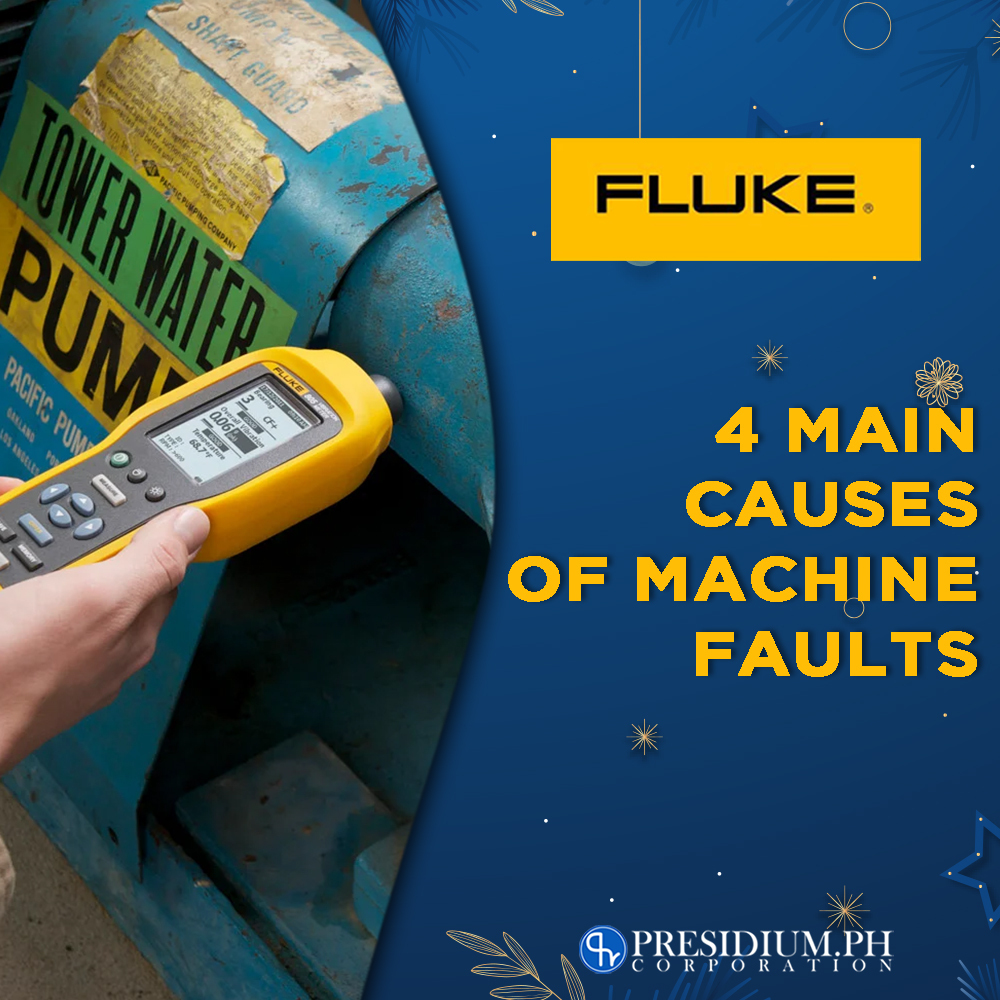4 Main Causes of Machine Faults

Machines are unpredictable things. It can be working properly and then the next, they can be coughing up oil, making unusual buzzing sounds, or worse, breaking down. This is exactly why having maintenance rounds are especially important to any industrial machine being used to prevent machine faults.
Why do machines develop faults?
Corresponding to any other modern technology in the industry, machines also tend to deteriorate in time. Rapid deterioration usually comes into action when the device or rather, the machine is not well taken care of. That, and a hundred more reasons why your machine is experiencing mechanical faults. But here, we are letting you in on the four main reasons why your machine is malfunctioning.
Yes, there are probably numerous reasons why, but according to a study, these four main categories accept most of them. And here, we will be looking closely at these four categories that are consuming your machine’s health.
Four main causes of machine faults.
These are the most common causes of why your machine is acting up. We are covering four parts which are, misalignment, imbalance, looseness, and bearing time. In the reality of things, do not expect that these causes will be the only cause of machine destruction. As we have mentioned, there are numerous causes of why your machine is experiencing blunders. However, most of those errors are caused by these four things.
1 Machine faults: Misalignment
First, how, and why is this a machine fault? We will give you a straight answer. Misalignment can cause multiple disturbing things when the machine performs. Why? Because this kind of motor error is produced by excessive vibration, noise, coupling, bearing temperature increases, premature bearing, coupling, or shaft failure. Given all those things, machine misalignment is not that hard to miss.
Believe it or not, misalignment also has different types that you need to be aware of in order to fully understand the ins and outs of this categorical machine fault. Let us briefly break it down, shall we? There are three types of motor misalignment.
- Angular Misalignment – Can cause severe damage to the driven equipment and other motors. This occurs when the motor is set at an angle to the driven equipment.
- Parallel Misalignment – This occurs when the two shaft centerlines are parallel, but not in the same line.
- Combination Misalignment – A combination of both parties above. This occurs when angular and parallel misalignment crosses paths, resulting in combination misalignment.
2 Machine faults: Looseness
At first thought, you might immediately think that something in the machine only needs tightening, but let us stop you right there. Looseness can be identified in three things and not just one. And there are levels of seriousness for each.
Type 1: This is when mechanical looseness has a time waveform of 1 pulse per revolution.
Type 2: This is caused by loose pillow block bolts, cracks in the frame structure, or in the bearing pedestal. The time waveform is typically two pulses per revolution.
Type 3: Deemed as the most complex one yet. According to a study, it is generally caused by the improper fit between components parts, such as bearings and their housing, a bearing liner loose in its cap, excessive clearance between a bearing and its sleeve, or a loose impeller on a shaft.
3 Mechanical faults: Imbalance
Also known as an unequal distribution of mass. According to a study by Lewis Motor Repair, balancing is a procedure in which the mass distribution of a rotor is assessed and if necessary, adjusted. Thus, when we say unbalanced, this simply means the unequal distribution of the weight of a rotor about its rotating centerline.
Here are some of the causes:
- Blow Holes in Castings
- Distortion
- Corrosion or Wear
- Deposit Build-Up
- Manufactured Unsymmetrical Configurations
- Hydraulic or Aerodynamic Unbalance
4 Mechanical faults: Bearing wear
It simply means that your mechanical motor is starting to get old. Ultimately, by carrying extensive loads, having poor lubrication or installation, the bearings will eventually fail. However, with the proper care and maintenance, such circumstances can be prevented.
Fluke Vibration Testers are the most ideal tool.
Get your hands on Fluke’s vibration testers. These test tools can undoubtedly be effective in every industrial operation whether it be an official check-up or your daily rounds. The Fluke 810 Vibration Tester is equipped with a diagnostic engine that combines algorithms with a database of real-world measurement experience. This device will allow them to quickly perform vibration analysis and evaluate the motor’s alignment accurately.
This will help every mechanical team in:
- Prioritizing and planning repair activities and operating more efficiently.
- Troubleshooting problem equipment and understanding the root cause of failure
- Anticipate equipment failures before they happen.
Some of Fluke vibration tester’s prized qualities:
- Comprehensive diagnostic reports and spectral diagrams help confirm data quality and narrow down the root cause of failures
- Flexible machine speed configurations give the ability to test a broad range of assets including belt drives, gearboxes, and bevel gears
- Fluke 810’s overall vibration level allows you to quickly assess overall machine health directly from the diagnosis screen
- Accountability severity scale with four severity levels helps you prioritize maintenance work
Get your Fluke tool from a trusted source!
Presidium.PH is an authorized distributor of Fluke test tools in the Philippines. So, if you want to know more about Fluke tools and their functions, visit our website for more info! This is a one-stop shop for the best test tools in the market!





